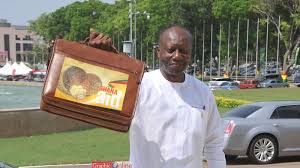The country ended March 2019 with total debt stock hitting ¢198 billion, the Bank of Ghana’s summary of financial and Economic Data has revealed.
This was revealed after the Monetary Policy Committee of the Central Bank met to review the health of the economy as at May 2019.
Based on government’s borrowing calendar for the first half of 2019, it is expected to ‘borrow’ some ¢23 billion.
However, the Finance ministry says these are costs associated with rolling over these government papers.
It maintained that it has rather just borrowed ¢1.6 billion, which can be described as fresh cash, in terms of the first half of the borrowings.
Impact of rising debt stock on the economy
For some people, the impact would be on Ghana’s debt servicing bill.
According to the 2018 Budget government is planning to aside ¢18.6 billion just to pay the interest of funds borrowed. This amount is just for the interest to be paid on these debts.
Again, if the economy does not expand to accommodate these rising debt, it could impact negatively on the country Debt-to-GDP Ratio, which currently stands at 58%.
According to the International Monetary Fund (IMF), Ghana if still classified as High Risk of Debt Distress country, based on their seven main indicators.
This is more of a warning to investors and businesses that Ghana could have some challenges in paying back its debts on time.
Also, one would be worried about how the rating agencies would interpret these numbers and possible impact on Ghana in terms of the cost of credit.
However, some financial analysts have also warned that if these funds that are not being invested in sectors that would pay back for it in the future, then the country could be sitting on a time bomb.
Some economists have also argued that since Ghana has not defaulted on its debts commitment in recent times, then investors may not react negatively to these debt numbers.
The current administration on the other has also argued that in discussing these numbers would look at the how they have been able to grow the economy to absorb this debt by looking at the Debt to GDP ratio.
Banking sector performance
The banking sector witnessed growth in most areas of its operation first half of 2019.
Total deposits in the banking sector ending April 2019 stood at ¢73.9 billion, representing 19.6 % increase and compared to ¢61.1 billion for the same period last year.
Total Advances also went up by 22% to reach ¢44 billion as at the ending April 2019. Total Assets also stood at ¢109 billion after going up by 12%. Non-Performing loans, however, went down marginally.
Source:myjoyonline.com








